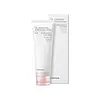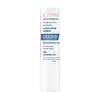What's inside
What's inside
 Key Ingredients
Key Ingredients

 Benefits
Benefits

 Concerns
Concerns

No concerns
 Ingredients Side-by-side
Ingredients Side-by-side

Water
Skin ConditioningGlycerin
HumectantButylene Glycol
HumectantDiglycerin
HumectantDiisostearyl Malate
EmollientIsononyl Isononanoate
EmollientNiacinamide
SmoothingPentylene Glycol
Skin ConditioningPolyglyceryl-3 Methylglucose Distearate
Emulsifying1,2-Hexanediol
Skin ConditioningHydroxyethyl Acrylate/Sodium Acryloyldimethyl Taurate Copolymer
Emulsion StabilisingAcrylates/C10-30 Alkyl Acrylate Crosspolymer
Emulsion StabilisingTromethamine
BufferingAmmonium Acryloyldimethyltaurate/Vp Copolymer
Zinc PCA
HumectantPanthenol
Skin ConditioningEthylhexylglycerin
Skin ConditioningAdenosine
Skin ConditioningSorbitan Isostearate
EmulsifyingSodium Phytate
4-Terpineol
MaskingKummerowia Striata Extract
Skin ConditioningOenothera Biennis Flower Extract
AstringentPinus Palustris Leaf Extract
TonicPueraria Lobata Root Extract
HumectantUlmus Davidiana Root Extract
Skin ConditioningBeta-Glucan
Skin ConditioningCinchona Pubescens Bark Extract
Skin ConditioningLeptospermum Scoparium Leaf Extract
Skin ConditioningTocopherol
AntioxidantWater, Glycerin, Butylene Glycol, Diglycerin, Diisostearyl Malate, Isononyl Isononanoate, Niacinamide, Pentylene Glycol, Polyglyceryl-3 Methylglucose Distearate, 1,2-Hexanediol, Hydroxyethyl Acrylate/Sodium Acryloyldimethyl Taurate Copolymer, Acrylates/C10-30 Alkyl Acrylate Crosspolymer, Tromethamine, Ammonium Acryloyldimethyltaurate/Vp Copolymer, Zinc PCA, Panthenol, Ethylhexylglycerin, Adenosine, Sorbitan Isostearate, Sodium Phytate, 4-Terpineol, Kummerowia Striata Extract, Oenothera Biennis Flower Extract, Pinus Palustris Leaf Extract, Pueraria Lobata Root Extract, Ulmus Davidiana Root Extract, Beta-Glucan, Cinchona Pubescens Bark Extract, Leptospermum Scoparium Leaf Extract, Tocopherol
Ricinus Communis Seed Oil
MaskingParaffinum Liquidum
EmollientBeeswax
Emulsion StabilisingHydrogenated Castor Oil
EmollientIsopropyl Palmitate
EmollientButyrospermum Parkii Butter
Skin ConditioningCetyl Esters
EmollientCetearyl Ethylhexanoate
EmollientBis-Diglyceryl Polyacyladipate-2
EmollientHydrogenated Vegetable Oil
EmollientSqualane
EmollientMicrocrystalline Wax
Emulsion StabilisingGlycerin
HumectantParaffin
PerfumingBHT
AntioxidantParfum
MaskingHydrogenated Starch Hydrolysate
HumectantIsopropyl Myristate
EmollientPanthenol
Skin ConditioningPropylene Glycol
HumectantTocopheryl Acetate
AntioxidantTrehalose
HumectantWater
Skin ConditioningRicinus Communis Seed Oil, Paraffinum Liquidum, Beeswax, Hydrogenated Castor Oil, Isopropyl Palmitate, Butyrospermum Parkii Butter, Cetyl Esters, Cetearyl Ethylhexanoate, Bis-Diglyceryl Polyacyladipate-2, Hydrogenated Vegetable Oil, Squalane, Microcrystalline Wax, Glycerin, Paraffin, BHT, Parfum, Hydrogenated Starch Hydrolysate, Isopropyl Myristate, Panthenol, Propylene Glycol, Tocopheryl Acetate, Trehalose, Water
 Reviews
Reviews

Ingredients Explained
These ingredients are found in both products.
Ingredients higher up in an ingredient list are typically present in a larger amount.
Glycerin is already naturally found in your skin. It helps moisturize and protect your skin.
A study from 2016 found glycerin to be more effective as a humectant than AHAs and hyaluronic acid.
As a humectant, it helps the skin stay hydrated by pulling moisture to your skin. The low molecular weight of glycerin allows it to pull moisture into the deeper layers of your skin.
Hydrated skin improves your skin barrier; Your skin barrier helps protect against irritants and bacteria.
Glycerin has also been found to have antimicrobial and antiviral properties. Due to these properties, glycerin is often used in wound and burn treatments.
In cosmetics, glycerin is usually derived from plants such as soybean or palm. However, it can also be sourced from animals, such as tallow or animal fat.
This ingredient is organic, colorless, odorless, and non-toxic.
Glycerin is the name for this ingredient in American English. British English uses Glycerol/Glycerine.
Learn more about GlycerinPanthenol is a common ingredient that helps hydrate and soothe the skin. It is found naturally in our skin and hair.
There are two forms of panthenol: D and L.
D-panthenol is also known as dexpanthenol. Most cosmetics use dexpanthenol or a mixture of D and L-panthenol.
Panthenol is famous due to its ability to go deeper into the skin's layers. Using this ingredient has numerous pros (and no cons):
Like hyaluronic acid, panthenol is a humectant. Humectants are able to bind and hold large amounts of water to keep skin hydrated.
This ingredient works well for wound healing. It works by increasing tissue in the wound and helps close open wounds.
Once oxidized, panthenol converts to pantothenic acid. Panthothenic acid is found in all living cells.
This ingredient is also referred to as pro-vitamin B5.
Learn more about PanthenolWater. It's the most common cosmetic ingredient of all. You'll usually see it at the top of ingredient lists, meaning that it makes up the largest part of the product.
So why is it so popular? Water most often acts as a solvent - this means that it helps dissolve other ingredients into the formulation.
You'll also recognize water as that liquid we all need to stay alive. If you see this, drink a glass of water. Stay hydrated!
Learn more about Water